 |
| The Max Kade lecture Therapeutic, Toxic, and Skin Deep: The Dark Magic of the Grimms’ Fairy Tales by Maria Tatar presented by the German Department of Hunter College Photo: Anne-Katrin Titze |
In the second instalment with Maria Tatar (John L Loeb Research Professor at Harvard University and a senior fellow at Harvard’s Society of Fellows) on The Heroine With 1,001 Faces we discuss Alex Garland’s Ex Machina (starring Alicia Vikander, Oscar Isaac, Domhnall Gleeson) and male anxiety, the meaning of clothing in All Fur, Donkey Skin and an Egyptian variant of the tales, boys in search of fear and girls in haunted houses, eating disorders and the appetite of tricksters in The Hunger Games and David Fincher’s The Girl With The Dragon Tattoo (with Rooney Mara and Daniel Craig), Louisa May Alcott and Little Women paving the way for Anne Of Green Gables and A Tree Grows In Brooklyn, Astrid Lindgren’s Pippi Longstocking and the home front, plus Maria’s and my favourite childhood fairy tales.
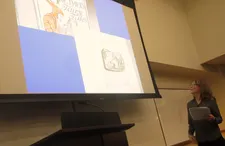 |
| Maria Tatar delivers her lecture Therapeutic, Toxic, and Skin Deep: The Dark Magic of the Grimms’ Fairy Tales at Hunter College Photo: Anne-Katrin Titze |
The Max Kade lecture in 2018, Therapeutic, Toxic, and Skin Deep: The Dark Magic of the Grimms’ Fairy Tales, by Maria Tatar was presented by German Department Chair Lisa Marie Anderson with an introduction from Anne-Katrin Titze inside the Cecile Insdorf Screening Room at Hunter College.
From Boston, Maria Tatar joined me on Zoom for an in-depth conversation on The Heroine With 1,001 Faces.
Anne-Katrin Titze: I want to go back to the point about storytelling and textiles. There is a great importance put on clothing in fairy tales. All Fur and Donkey Skin both have a coat made of animal fur and you mention a tale from Egypt in your book, a tale I wasn’t familiar with, about a princess in a suit of leather. This is yet another animal skin used in a tale that speaks of incestuous desires and domestic violence. Why do they all use animal skins? What do you make of this?
Maria Tatar: Isn’t that extraordinary? They have to return to nature because of the need to escape civilization. It is civilization that is wild, and barbaric and ruthless. We say ‘nature red in tooth and claw’, but in fact civilization can be the real threat. For these heroines, it’s not a regressive move really, not just returning to nature, but finding refuge, safety, a haven. I think it’s Donkey Skin who ends up in the trunk of a tree. She finds shelter in nature and protection.
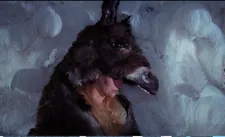 |
| Catherine Deneuve in Jacques Demy’s Peau d'Âne (Donkey Skin) |
A connection with animals is something that we find often in fairy tales. There is a way in which we have animal helpers and human villains. The humans are the persecutors. But this is just a temporary state; it is the path through nature that enables these heroines to return to civilisation and to repair the wrongs that have been committed, not just against them, but against their sister, relatives, friends, neighbours.
AKT: The animal skin as an in-between stage. Also the dresses of the sun, the moon, the stars, or the weather speak of their wish to be elsewhere, above human horrors, out of the domestic sphere. I noticed that one type of tale doesn’t really seem to have female versions and that is the boy-in-search-of-fear tales.
MT: You’re right, I can’t think of any counterparts with a female protagonist. Although, that is a story about a haunted house and in a sense, maybe you could think of Bluebeard. A place that houses a murderous husband as being somehow an equivalent story. Bluebeard’s wife of course has to learn courage and find the power within her to escape this tyrant. The boy in the tale also learns how to shiver, doesn’t he?
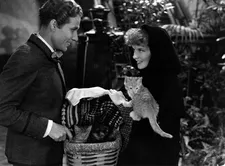 |
| Katharine Hepburn as Jo March with Laurie (Douglass Montgomery) and kittens in George Cukor’s Little Women |
AKT: Yes, and I find it so interesting that for the female heroines it’s a search for justice or truth, but not just for something that makes them scared [although Margaret O'Brien as Tootie in Vincente Minnelli’s Meet Me In St. Louis may come to mind].
MT: Yeah, back to that liminal state, which is actually part of Campbell’s journey, part of the hero’s journey toward maturity and leadership and heroic action.
AKT: You make a very interesting point in connection to Stieg Larsson’s heroine and Hunger Games and point out the bulimic behaviour of these characters. I mean, food has always been important in fairy tales. Hansel and Gretel is all about food.
MT: Right, in myth of course there’s the trickster figure. There’s a wonderful book called Trickster and Hero [by Harold Scheub], which examines the relationship between these two figures. There is the hero who is the spiritual leader, the warrior, the noble courageous figure who sacrifices himself for the good of a culture and then there’s the trickster who is mercurial, clever, and something of a cheat. I would say Loki and Anansi in African folklore, Brer Rabbit, and so on.
AKT: Edshu, the African trickster with the bi-coloured hat, I think is someone mentioned by Campbell.
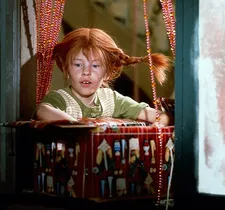 |
| Inger Nilsson as Pippi Longstocking in Olle Hellbom’s adaptation of Astrid Lindgren’s classic books |
MT: Yes, who is the master linguist and also connected with storytelling. Again, not alarm bells, but something going off in my head about the fact that there has to be a female trickster. Even though mythographers tell us there really aren’t any female tricksters. But given the connection of the trickster to storytelling and language, which have been the instruments of women to find social justice, it seemed to me that there had to be some female tricksters.
And sure enough, paging Hollywood, we have the film version of The Girl With The Dragon Tattoo and we have all kinds of figures emerging in cinematic culture and in fiction as well. Women who have the same kinds of eating disorders we find in the male trickster. The male trickster has a gargantuan appetite. He is also full of sexual desire, he pursues anything with legs, anything that is moving.
The female trickster, I thought was so fascinating, their eating disorder seems to be bulimia or anorexia, as with Lisbeth Salander. And then think of The ‘Hunger’ Games! We talked about the essential nature of food in these stories. What does Katniss Everdeen witness but bulimic behaviour of the people of the capitol? She herself when the story begins is starving. She’s not really anorexic by choice but it’s sort of involuntary anorexia.
AKT: When speaking of the appetites of heroines, we of course have to mention the great Angela Carter who doesn’t hide her heroines’ appetites. To the point of childhood and adulthood, you say Louisa May Alcott with Little Women really invented a new genre. I love that sentence of yours: “ All the desires, passions, and appetites that turn grown women into monsters can safely be experienced and expressed in childhood.”
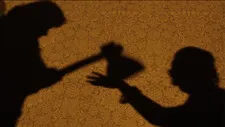 |
| Bluebeard scene in Jane Campion's The Piano |
MT: In literature for girls! I can’t tell you the number of people I know who grew up with Little Women and they loved Jo.
AKT: Count me among them.
MT: Often they couldn’t explain to me and I talked to many people about their experience reading Little Women, and they couldn’t explain what it was about Jo that they loved so much. It came down to her being a tomboy and things like that. But look at Jo’s world! She’s a dramatist, she’s a playwright, she manages to execute domestic chores, she’s vivacious, she has a good time too. And when she’s in an oppressive situation, she tries to get herself out of it.
Then of course the fact that she’s a writer, that she self-actualizes through writing. Which is then something she has to give up because of her “social work” and her domestic duties. In real life, of course, Louisa May Alcott did manage to succeed. It’s extraordinary that she was able to, and against her will, that is, she actually said: I don’t really like girls all that much and I don’t want to write a novel about girls. And yet because her editor was very excited about it, she went ahead and did it and opened the door to all kinds of possibilities. Could Anne of Green Gables have existed without Little Women?
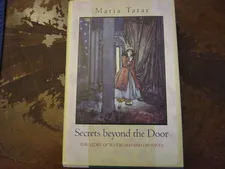 |
| Maria Tatar’s Secrets Beyond The Door: The Story Of Bluebeard and His Wives Photo: Anne-Katrin Titze |
AKT: No.
MT: Or A Tree Grows in Brooklyn? All of these writers looked back to Louisa May Alcott and Jo March.
AKT: Absolutely. The active mind and the spirit of doing things that we have in Jo, we also find in Pippi Longstocking. I found fascinating how you connected the times of war when those books were written. I was not really aware that Astrid Lindgren Invented Pippi in 1941, that this is a war product. There is a combination of nursing and at the same time not forgetting about fun and enjoyment in difficult times and the happiness we find in these female characters!
MT: Still being able to preserve a modicum of joy! I think what you say is so important because it’s in times of crisis that the possibility of heroism is opened up. And in these wars men are going off to fight, becoming heroes. By the way, Louisa May Alcott volunteered herself and became a nurse and dressed wounds during the Civil War. So the possibilities for heroism opened up, but for men mainly. Where are women? They are on the home front.
And home front is an important term. They can’t go on the journey but they can still do things. There they are raising children and Astrid Lindgren invented Pippi Longstocking for her daughter in a way to bring joy into her life. It’s an extraordinary act of courage. Again, many of my students grew up with Pippi Longstocking. Hers was the book that they put under their pillow at night and they dreamed about Pippi Longstocking and dressed up as Pippi on Halloween.
 |
| Alicia Vikander as Ava in Alex Garland’s Ex Machina |
AKT: Pippi was one of my favourites too growing up! I usually ask the students in my fairy-tale classes about their favourite tales on the first day and then return in the end full circle to the question to see if there are new favourites. I would like to do that with you, too. What were your favourites when you were growing up? And where are they now in your head?
MT: Well, I loved Hansel and Gretel and I think it was because it’s a story abut sibling solidarity and I had three brothers and sisters. That was an important story for me. But then, and I’m almost embarrassed to admit it, I loved Snow White. And I loved that story because there was a picture of Snow White in my book of fairy tales where she was in the coffin, with the dwarves kneeling by the side of the coffin. And she just looked so beautiful, so exquisite. I think it was actually the glass coffin that got to me more than her beauty in an odd sort of way. I’m still trying to figure that puzzle out, why that story.
Later in life, I’d have to say that every day I have a different favorite fairy tale. But the one that preoccupied me as an adult and I wrote a book about this fairy tale, is the Bluebeard story. Although it has a happy ending, it’s not really a happily ever after. It shows you what happens after happily ever after, how marriage can be haunted by the threat of murder, and it takes us into the terrain of domestic violence. Variants of that story also take us into the territory of sexual assault. Stories like Mr. Fox and The Robber Bridegroom, where women manage to defeat their murderous fiancé by broadcasting at the wedding dinner the misdeeds of their betrothed.
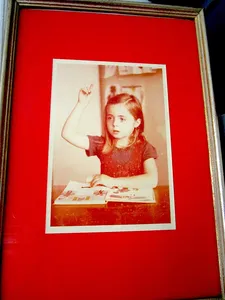 |
| Anne-Katrin Titze’s favourite tales at age six were Hans Christian Andersen’s The Snow Queen and Sterntaler, collected by the Brothers Grimm Photo: courtesy of Anne-Katrin Titze |
AKT: “My dear, it was only a dream!”
MT: Yes, “it was only a dream” - again the use of coded language. “I’m just going to tell you a dream.”
AKT: The heroines have to go through the telling of the “dream” story to come out with the real. I have to admit that my childhood favourite is as puzzling as yours. Sterntaler, The Star Coins!
MT: I totally get that! And again I flash back to the story in my book of fairy tales and the illustration for that story. And the beauty of her picking up these coins. Why did you love it?
AKT: I don’t know. My wonderful grandmother who initiated me into fairy tales, she worked in finance all day and in the evening after work came by to tell me tales for an hour every day. She told me personal tales and all the classic ones. My two favourites were The Star Coins and The Snow Queen. With The Snow Queen, I can still say, okay, there is this heroine who goes out to rescue and conquer a new world. But Star Coins is all about sacrifice, about “I give away everything!”
MT: Everything, yeah.
AKT: It’s a puzzle to me, why this one of all tales.
MT: It reminds me of The Giving Tree. You know that story about the tree which ends up just a mere stump because it has given so much. I mean, if you think again of women’s work and the sacrifice that was imposed on them. Maybe part of the attraction of that story maybe is that there actually is a reward in the end. And in reality there often was not. You could go ahead and sacrifice and give everything, go the last mile and you wouldn’t get any gold coins in return.
Still there’s something beautiful about the kindness, the idea of elevating kindness to the highest virtue. That’s something that’s so prominent in our culture today with its emphasis on empathy. Empathy to the expense of other virtues, which I would say are as important, curiosity for example. Because it’s curiosity, I think, that drives us to care for things; to investigate, to examine them, to find out what makes them tick.
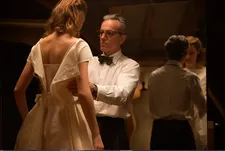 |
| Vicky Krieps and Daniel Day-Lewis in Paul Thomas Anderson’s Phantom Thread |
AKT: Which is so great about most of the Bluebeard tales, which is that the curiosity and the opening of the doors and the disobedience is usually rewarded. It is again, as you put it so well in your book [The Heroine With 1,001 Faces], that curiosity “kept the cat alive” and saves all the future kittens. I would like to turn to Alex Garland’s Ex Machina. His film is a very interesting twist on the Bluebeard theme, with nods to E.T. A. Hoffmann’s The Sandman, also Mary de Morgan’s A Toy Princess, on to Fritz Lang’s Metropolis. Tell me about your Ex Machina thoughts!
MT: To begin with, the woman is named Ava [played by Alicia Vikander]. There are shades of the Garden of Eden and again curiosity, which is what got us in trouble. But suddenly we have this creature who is threatening the very existence of the patriarchy basically. Represented by the owner [played by Oscar Isaac] of a company called Blue Book, of all things. She manages through her cleverness, through her intelligence - and who is her creator? Not God, but an ordinary human male creator. And she turns on her creator and enters the world of commerce.
Here she’s again a powerful trickster figure. Because where does she end up? She’s sort of like Mercury because she ends up at the crossroads, she’s something of a messenger, a traveller. When you see Ava at those crossroads, you know she’s going to take over the world. So this seems to me a film that reflects the anxiety of men about women entering the professional world. It’s not just anxiety about artificial intelligence but artificial intelligence embodied as a woman. Somehow you have this merging of anxieties about machines and automatons.
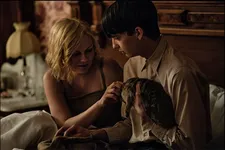 |
| Kirsten Dunst and Kodi Smit-McPhee in Jane Campion's Oscar-nominated The Power Of The Dog |
AKT: The Cyborg Manifesto!
MT: Exactly, cyborgs and anxieties about professional women, women entering the work place.
AKT: Speaking of Bluebeard, I love Jane Campion’s use of Bluebeard as a play in The Piano. Did you see The Power Of The Dog?
MT: It’s in my line-up, I will definitely watch it tonight!
AKT: Another film I can highly recommend is Phantom Thread, if you haven’t seen it. It’s one of my favourites from the last decade.
MT: I have not seen it, no. I’m catching up to them. Is that Pygmalion-like? It sounds like it’s a Pygmalion story.
AKT: In a way but with a very interesting twist. There’s definitely more to it than Pygmalion. There’s clothes making and secret codes embroidered.
Read what Maria Tatar had to say on Joseph Campbell’s Hero with a Thousand Faces, Scheherazade, Neil Gaiman, Henry Louis Gates, Jr.’s Finding Your Roots and the Talking Book,Toni Morrison, Michael Schulz’s screenplay for Karin Brandauer’s Aschenputtel, Sergei Loznitsa’s documentary Babi Yar. Context, Angela Carter, Jordan Peele’s Get Out, the Grimm Brothers, textile production, domestic confinement and the move toward social justice.





















